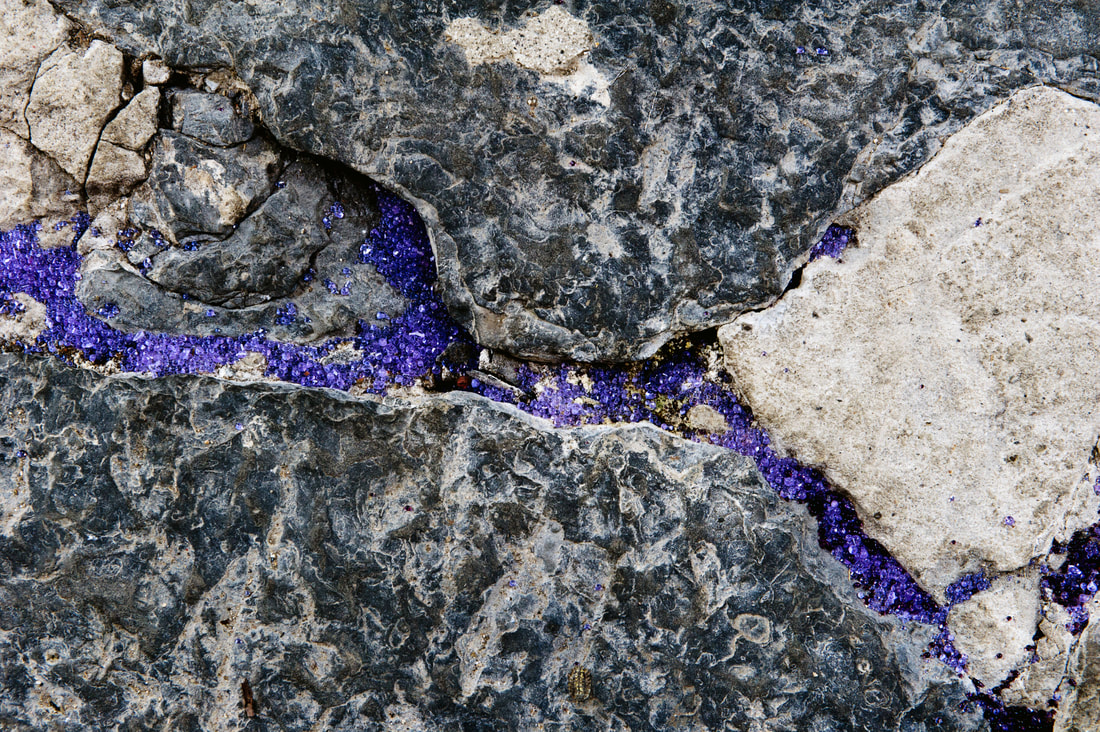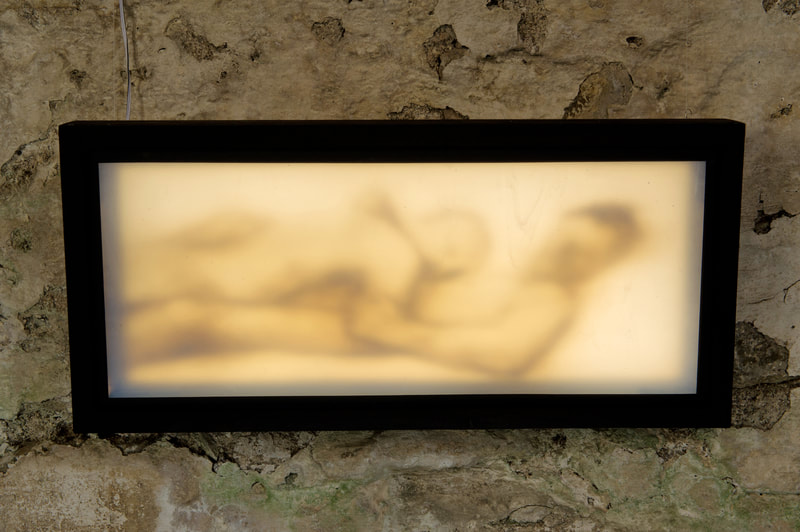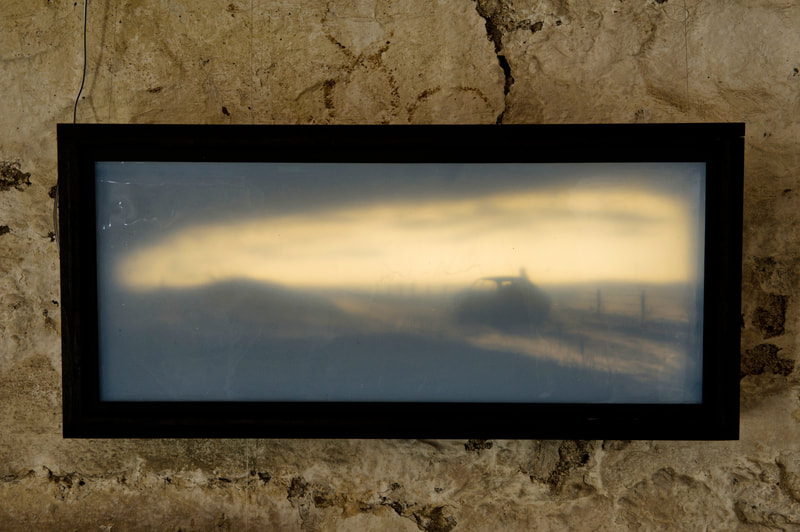Field Notes - Shelter/Shadow

This Spectacular Darkness
Glass, wooden frame 29.5 x 51 cm/11.5" x 20" (text: Edwin Morgan, 'Grendel') After Dark I
Layers of enamelled glass, lightbox 23 x 49/9" x 19" Photo: Angus Mackay Shelter
Layers of enamelled glass, lightbox 23 x 49 cm/9" x 19" Photo: Angus Mackay The Presence of Absence
Glass, wooden frame 24 x 24 cm/9.5" x 9.5" Photo: Angus Mackay |
Field Notes @ Bullseye Projects Byre
Field Notes was an exhibition of four artists (Annie Cattrell, Anne Vibeke Mou, Anne Petters and me) invited by curator Michael Endo at Bullseye Projects to make site-specific installations in the old Byre outside the former minister's home (manse) in Caithness, a remote county in the north of Scotland. When approaching this project, I kept bumping up against the thought that this structure was created to support the minister of the Parish of Latheron whose exercise of religion and power would likely have been hostile to queer people like me. Yet there will have been people might today identify as lesbian, gay, bi, trans, intersex and queer living in Caithness through its history of human habitation. Some have probably lived in this house, worked this land, and passed through this byre. I wanted to create a space that made these experiences visible – and to create it using a vocabulary that made sense in a Caithnesian context. My first act was to re-christen the space as a queer space by filling cracks between the flagstones with frit balls – sharp shards of crushed glass that, when exposed to the extreme heat of the kiln, form luminous polished flattened spheres that capture and reflect the light. I used lavender, purple and pink – colours traditionally associated with queerness – to create thresholds over which visitors must pass and pathways through the space. It is my intention that some of these bits of queerness will work their way between the cracks and into the ground beneath the byre - thus becoming a part of the archaeology of the landscape; a sort of permanent record for the future that this was once a queer space (Future Queer Archaeology). Through friends, recommendations and responses to on-line postings, I interviewed approximately twenty LGBTIQ+ individuals who grew up, have lived, or currently live in Caithness. Some of the stories and themes from these exchanges became the images presented in the illuminated paintings (After Dark, Security, No One Knew For Sure, and She/Her). However, an undercurrent began to emerge – most (but certainly not all) of the people I spoke with engaged in some sort of camouflage and/or self-erasure. The idea of the black mirror (or ‘Claude glass’ as it is sometimes known) seemed an appropriate way to explore this idea. Historically, black mirrors were seen reflect a ‘looming absence’ – something simultaneously presence and not present. These mirrors take a few forms – convex mirrors that distort the world around them, mirrors containing a dim silhouette that is present but often unseen, and mirrors in the shapes of the dark waters of the dubh lochs (black lochs) of the Flow Country (The Presence of Absence, Family of Choice ((In)Visibility), The Black Lochans/Flow Country, etc.). The black mirrors are extended into text pieces where light seems to flow like a liquid to form quotes about the love, beauty and alienation that can be found in the shadows and in darkness. These are all taken from the poems of Glasgow Poet Laureate Edwin Morgan, who only came out publicly as a gay man on his 70th birthday. My work often explores the sensual beauty of shadows, fog and ambiguity, and these works continue those explorations. While the hand painted, layered illuminated glass paintings are done using techniques that I have worked within for most of my career, the works in black glass all represent entirely new technical directions. This opportunity was created by Bullseye Projects, part of Bullseye Glass. At the start of this project I decided that to make these works I wanted to find a language that made use of the unique properties of Bullseye's glass - things that cannot be achieved with my usual ways of working. To do this, I needed to spend a lot of time exploring and fitting my studio out with a new and different kiln to achieve the higher temperatures required for fusing Bullseye. In this I frequently let the material guide me. The freedom to experiment and to seize on the creative potentials of the many ‘failures’ I encountered has opened up entire new expressive potential in my work. |




















